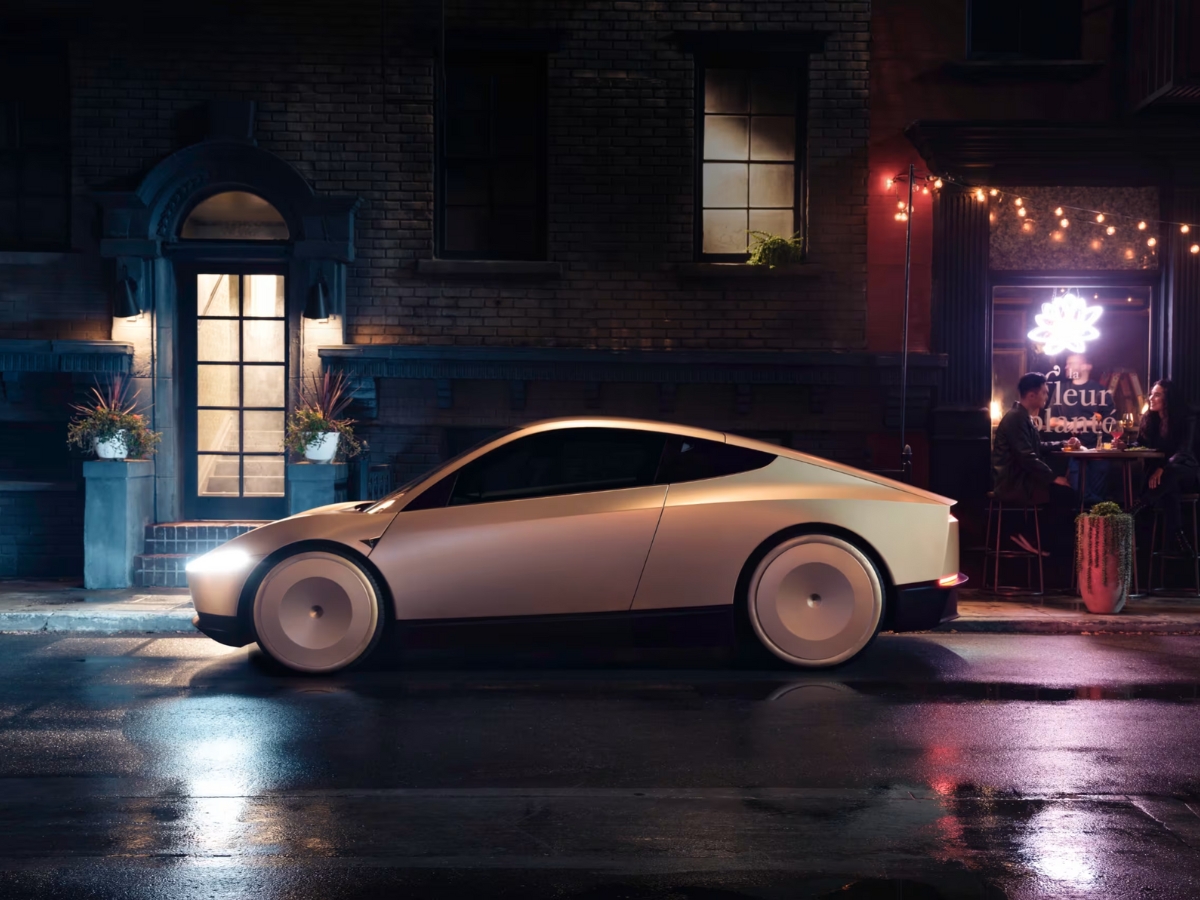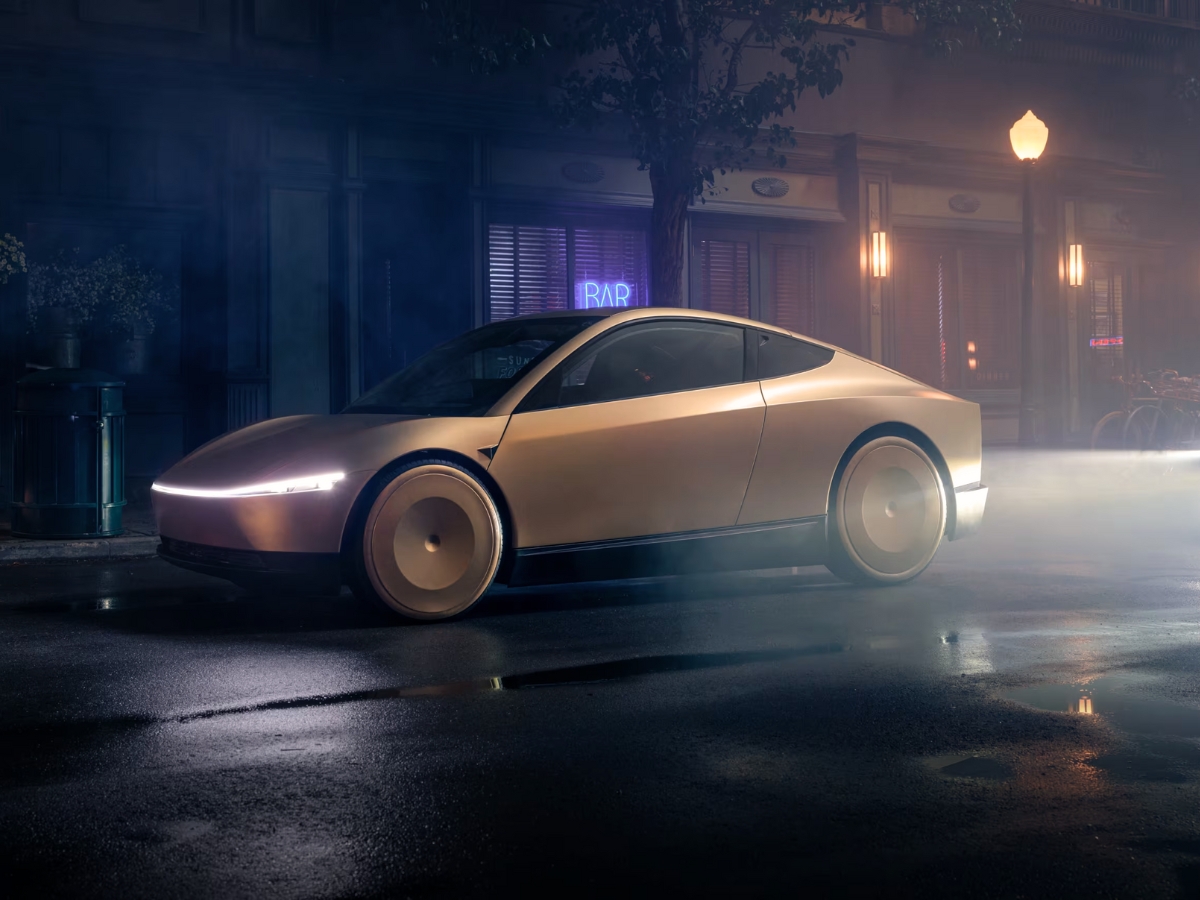Tesla’s New Robotaxi
Tesla’s latest release highlights the future direction of transportation. Officially starting its long-teased robotaxi service, an all-electric, totally driverless fleet meant to literally take the wheel from humans, the business This signals a turning point in the narrative of autonomous driving, urban mobility, and sustainable transportation, not only another leap for the EV market. This debut marks a larger change in how cars, and car ownership, might develop regardless of your daily commute, tech following, or just curiosity about what’s ahead.
What exactly, then, is a Tesla Robotaxi?
Fundamentally, a Tesla Robotaxi is a driverless car that runs without a human behind-the-wheel control. Years ago, Elon Musk first proposed the idea; today, thanks to Level 4 autonomous driving technologies, it is at last here. These vehicles are designed to negotiate most surroundings on their initiative. Using the Tesla app, you call forth the car, which shows up like any ride-hailing service, just without a driver.
Inside the Technology That Drives It
Entering a Tesla robotaxi involves entering inside a mobile artificial intelligence system, not only an electric vehicle. To enable the car to see and respond to its environment, Tesla combines real-time data, camera-based vision, and machine learning. The brand’s strategy avoids LiDAR and instead emphasizes advanced visual processing to properly scale its automobile technology. Over-the-air updates that continuously hone safety, performance, and user experience help these self-driving cars as well.

Powering Up and Scaling Smartly
What’s Different From a Standard Tesla?
The robotaxi, on first look, is similar to a Model 3 or Model Y. But enter and you will see it is designed with passengers, not drivers, in mind. No steering wheel. There are surprisingly few hand controls available. There is an increase in screen time and the use of innovative entertainment devices. This design marks a change in vehicle design towards ride-first elements stressing comfort and usefulness. And because they’re electric, they also promote sustainable transport.
How Much Will It Cost You?
Tesla aims to undercut the costs of existing ride-hailing platforms like Uber and Lyft. That means you could get a ride for less, without the added expenses of owning, fueling, or maintaining a car. It’s a serious nudge toward rethinking personal vehicle ownership, especially when car sharing and subscription car services are becoming more attractive. With fewer strings attached, mobility could feel more accessible and less burdensome.
City Life Could Look Very Different
In busy cities, the traffic grind is a real problem. Tesla’s robotaxis offer a smarter way to move people, optimizing routes, reducing parked vehicles, and potentially cutting down congestion. For urban planners, the prospect opens the door to rethinking roads, space, and pollution. It’s a vision aligned with future urban mobility solutions, especially when fewer people need to own a vehicle in the first place.
Is It Safe? That’s the Big Question
Whenever autonomous vehicles hit the road, safety becomes the focus. Tesla claims its system already performs better than human drivers in several metrics. But Level 4 autonomous driving safety still has nuances, and real-world testing is far from finished. While early users report smooth experiences, regulatory bodies continue to monitor these vehicles closely. It’s a reminder that while AI in cars is evolving, the road to universal safety still has checkpoints.
Powering Up and Scaling Smartly
To keep the fleet operational, Tesla has ramped up its smart charging infrastructure. Quick-charge hubs, intelligent fleet routing, and automatic diagnostics reduce downtime and streamline logistics. Fleet management integrates with EV charging apps, allowing energy usage and trip data to sync efficiently. From a backend perspective, this model helps scale the service without overwhelming resources.
What This Means for the Rest of the Industry
Tesla isn’t just starting something; it’s pressuring others to catch up. Legacy automakers are investing more in affordable EVs for 2025, developing solid-state batteries, and rethinking connected car features. Whether it’s a hypercar or an entry-level electric sedan, the trend is unmistakable: smarter, cleaner, more intuitive mobility. Tesla’s robotaxi launch has the potential to accelerate the industry-wide transformation.
Should You Take a Ride?
If you live in one of the launch cities and have the option, trying out a robotaxi might feel like stepping into the future. It’s convenient, possibly more affordable, and contributes to a broader vision of sustainable transport. Whether your goal is to cut down on emissions, dodge high fuel prices, or simply experience something new, the service offers a real-time glimpse into what comes next.
Conclusion
Tesla’s robotaxi rollout isn’t just about debuting another electric vehicle. It signifies a significant milestone in both personal and public transportation, pushing the limits of autonomous driving, convenience, and system-wide efficiency. As cities adapt and consumers become more comfortable with the idea of driverless travel, it could redefine your expectations around car ownership, mobility, and environmental responsibility. So the next time a driverless Tesla pulls up to the curb, you might be looking at more than just a ride; you could be witnessing a preview of the future.





